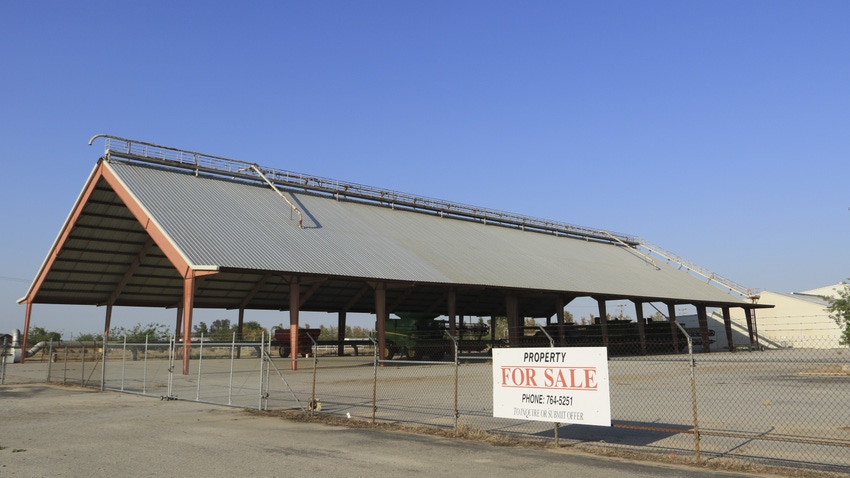
The gravity of higher interest rates and other economic woes forced agricultural land values down last year. Some think it’s just the beginning of something bigger.
The annual Trends Report, published by the California Chapter of the American Society of Farm Managers and Rural Appraisers, records a downtrend in ag real estate values that began within the past year. This comes on the heels of higher lending rates and dismal commodities prices from popular crops like almonds and walnuts.
What was characterized in the Trends Report as a “mostly stable” and “resilient” agricultural land market in 2022 changed abruptly in the first quarter of 2023.
Irrigation water availability and the California Sustainable Groundwater Management Act are also showing up in lower land prices. All combined, the cracks in the agricultural economy led to several bankruptcy filings that included large, investor-owned farm holdings in central California.
Michael Ming, managing principal with Lee & Associates in central California, said he had buyers “kicking tires” last year before interest rates began to climb and large agricultural bankruptcies became headlines. That move put large tracts of agricultural properties on the market, causing potential buyers to hit the brakes and ag land prices to tumble.
Up and down
Almond orchards that once commanded over $60,000 an acre in parts of the state slumped, as did others. Such was not the case for pistachios, which have never been higher. Since 2020, land values for pistachios in the central San Joaquin Valley continued a significant climb, raising from about $45,000 on average, to $65,000 per acre in 2023, surpassing a flattening curve in south San Joaquin Valley pistachio values.
Almonds are another story. What peaked for many between 2020 and 2022 has now fallen, some more than others, according to the Trends Report. In the northern San Joaquin Valley, almond land values peaked at $55,000 per acre over the past several years, with outliers in the low $60,000 range. Rural appraisers say the underlying land values haven’t suffered as much as the value of the almonds planted to them, which in the past several years have gone from profitable to unprofitable margins.
Coastal irrigated cropland from Ventura to Monterey spiked in value as the value of prime Napa and Sonoma vineyards continues to know no ceiling, even as groundwater pumping remains restrictive.
While post-pandemic wine sales continue to slump, and industry leaders like Jeff Bitter with Allied Grape Growers Association calls for significant removals of winegrapes statewide to balance supply with demand, Napa County prime vineyard values have now exceeded $525,000, with similar vineyards in Sonoma County selling for as much as $215,000. Strong market demand remained in 2023 for prime Napa vineyards, but with limited activity.
There were several notable wine acquisitions in 2023, including an undisclosed price for Rombauer by Gallo, and a $900 million sale of Daou Vineyards in Paso Robles by Treasure Wine Estates.
More losses projected
More stacks of removed vineyards in the central Valley, particularly of those planted to table grapes, should continue, according to Ming.
Some of Ming’s clients are asking what to do once they remove their vineyards or almond orchards.
“We’re getting a lot of questions from clients; we’re telling them to simply sit tight and see where the market dictates,” he said. He admits the “hold tight” recommendation is neither popular or positive.
Irrigation availability is a large driver in this, particularly in the southern San Joaquin Valley where groundwater pumping will be restricted to well under one acre foot per acre, per year. In their regional reports on the southern San Joaquin Valley, Ming and farm manager Ryan Metzler echoed projections of almost one million acres of farmland statewide being lost due to irrigation cuts. Many of those losses will occur in the state’s most prolific agricultural producing counties of Kern and Tulare.
This will happen, Ming says, as California reduces its State Water Project deliveries from an average of 34% of contracted promises, to near zero by 2040.
Solar
This year’s California ASFMRA Outlook Conference featured discussions on the value of solar, not merely as an input to the electric grid, but as a potential source of income for agricultural landowners unable to farm because of water curtailments and unprofitable costs of production.
Investors and public agencies are said to be looking at the best and highest use of land in Kern County and elsewhere for large solar projects as California pushes for more solar projects.
About the Author(s)
You May Also Like






